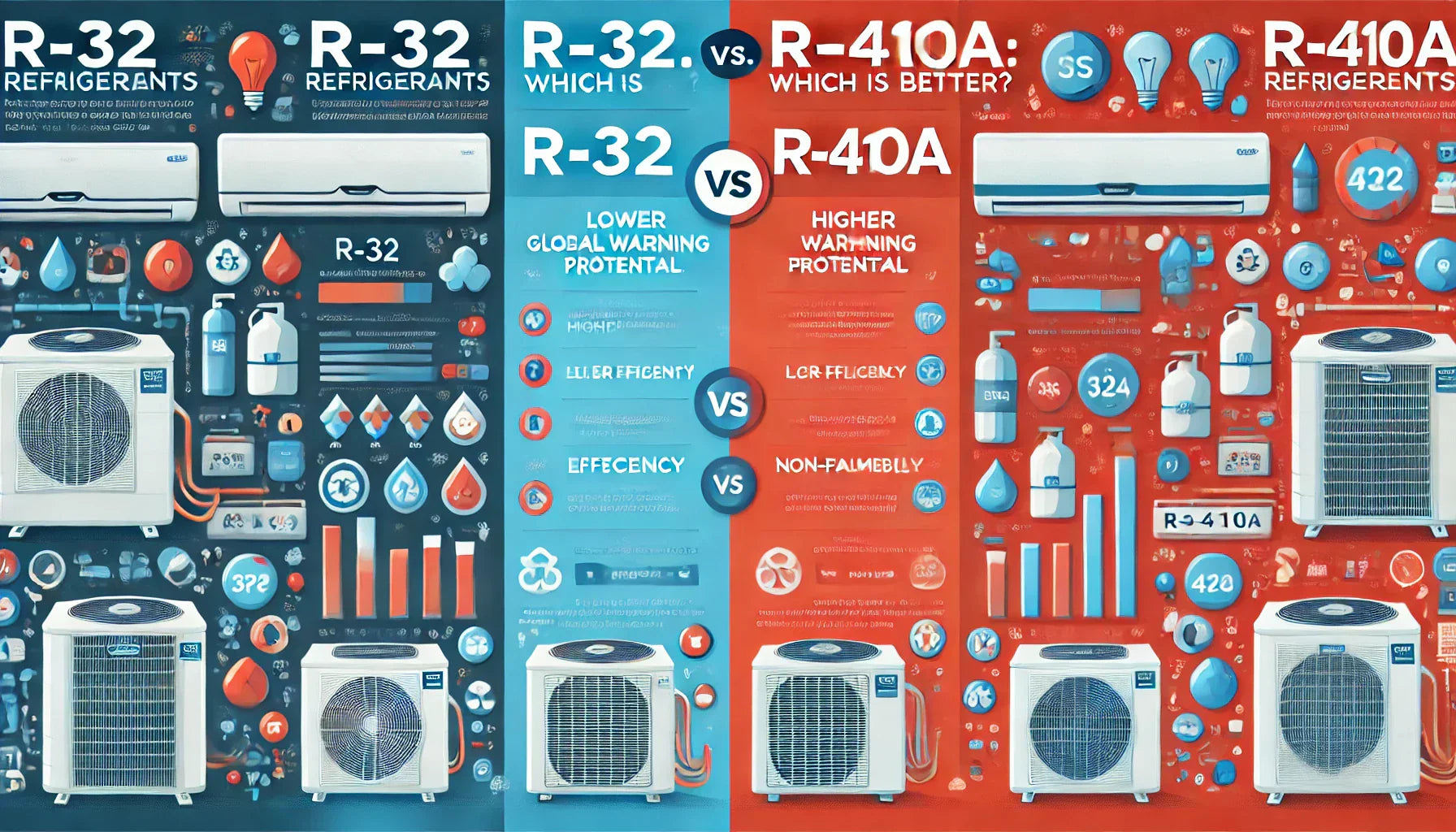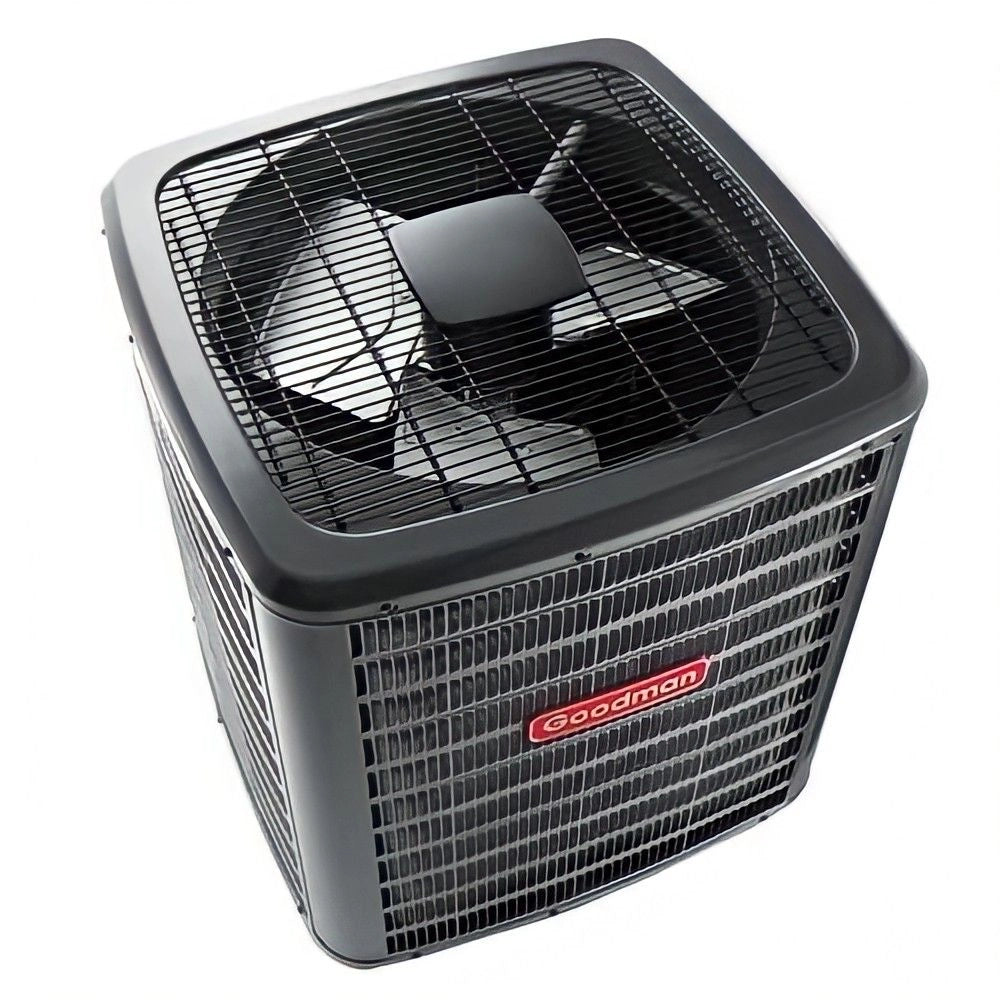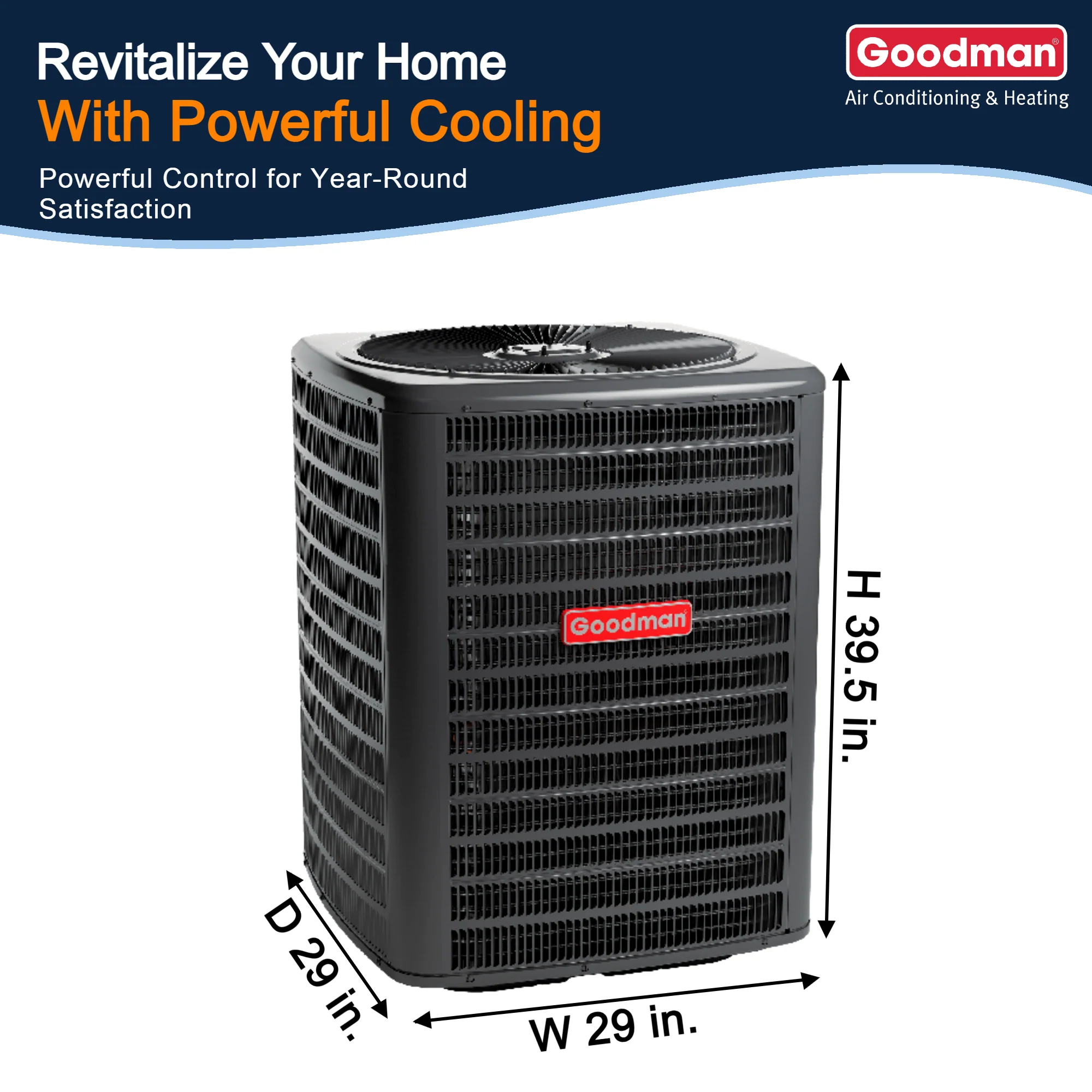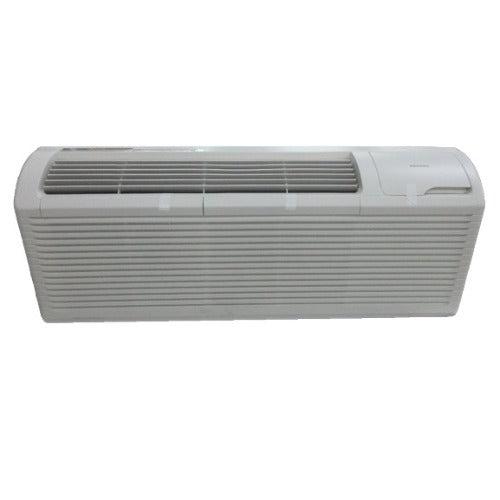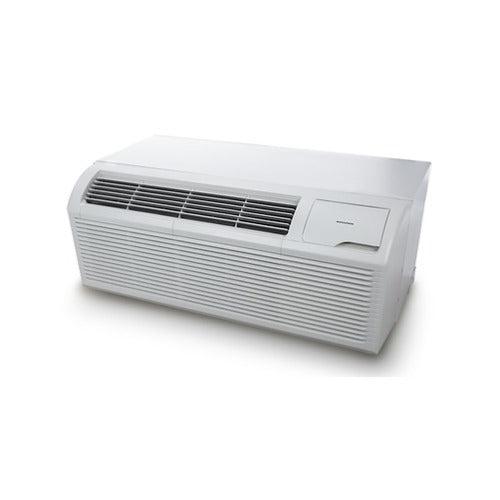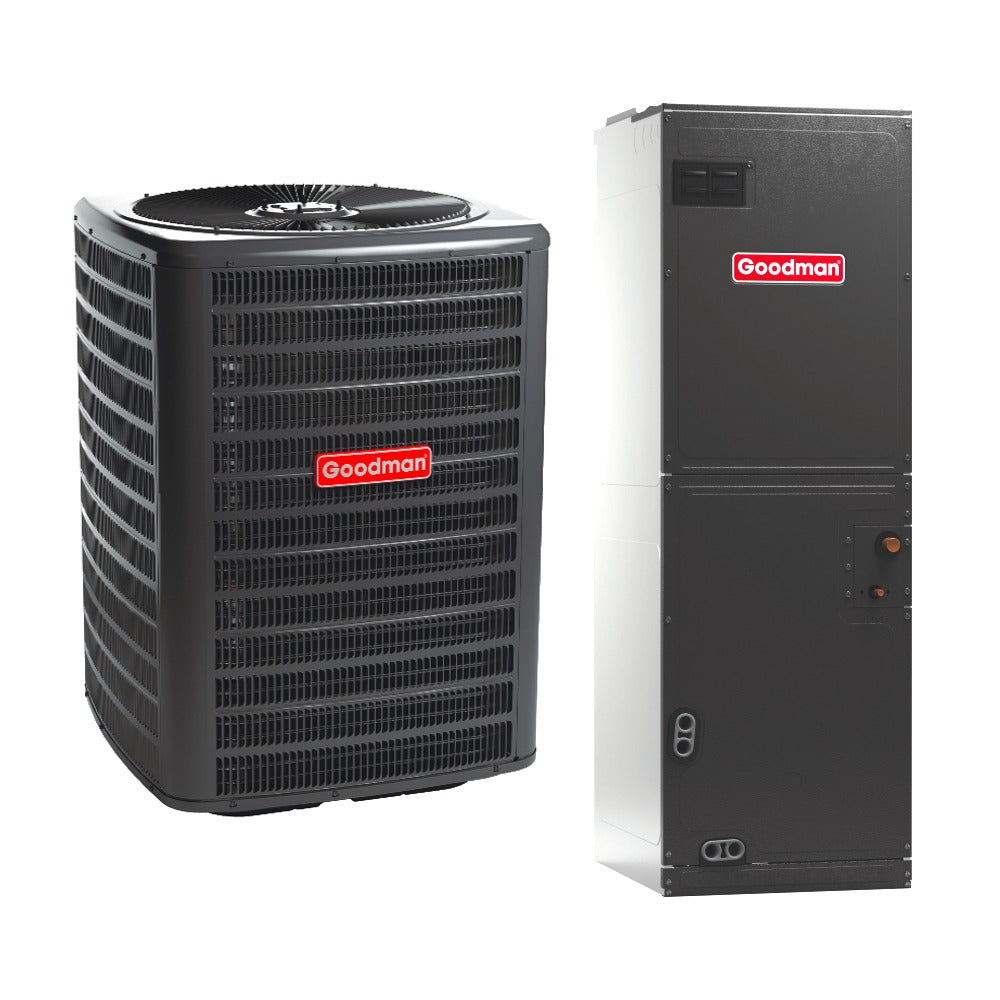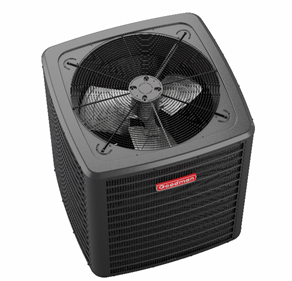R-32 vs. R-410A: Which is the Better Refrigerant for Residential ACs?
Introduction
Choosing the right refrigerant is crucial for energy efficiency, cooling performance, and environmental impact. With the transition from R-410A to R-32 in residential air conditioning, homeowners need to understand the key differences. In this article, we’ll compare R-32 vs. R-410A to help you determine which refrigerant is best for your HVAC system.
1. Environmental Impact
R-32: Eco-Friendly Choice
- Global Warming Potential (GWP): 675 (Low impact)
- Ozone Depletion Potential (ODP): 0
- Lower carbon footprint compared to R-410A
R-410A: Higher Environmental Impact
- GWP: 2,088 (High impact)
- ODP: 0
- Heavier refrigerant with greater greenhouse gas emissions
🔹 Winner: R-32 is more environmentally friendly.
2. Energy Efficiency & Performance
R-32: Higher Cooling Efficiency
- Higher energy efficiency due to better thermodynamic properties
- Requires up to 30% less refrigerant than R-410A
- Faster heat transfer for improved cooling performance
R-410A: Lower Efficiency
- Requires more refrigerant charge for the same cooling output
- Less efficient compared to R-32, leading to higher energy consumption
🔹 Winner: R-32 provides better efficiency and performance.
3. Refrigerant Safety & Flammability
R-32: Mildly Flammable (A2L Classification)
- Slightly flammable but safe when handled properly
- Requires trained technicians for installation
- Used safely in millions of air conditioning units worldwide
R-410A: Non-Flammable (A1 Classification)
- No risk of flammability
- Considered safer for older HVAC systems
🔹 Winner: R-410A is non-flammable, but R-32 is safe when handled correctly.
4. Cost Considerations
R-32: Cost-Effective in the Long Run
- Lower refrigerant charge requirements reduce costs
- More energy savings due to higher efficiency
- Widely available with increasing adoption
R-410A: Increasing Costs Due to Phase-Out
- Higher refrigerant usage per unit
- R-410A phase-out causing price increases
- Less energy-efficient, leading to higher electricity bills
🔹 Winner: R-32 is more cost-effective over time.
5. Availability & Transition Considerations
R-32: The Future of Residential Cooling
- Already adopted in many high-efficiency HVAC systems
- Increasing regulatory support for sustainable refrigerants
- Compatible with newer AC models
R-410A: Being Phased Out
- Gradually being replaced by low-GWP alternatives
- Limited future availability
- Existing HVAC systems may require retrofitting for compatibility with R-32
🔹 Winner: R-32 is the preferred choice for new AC systems.
Conclusion: Which One Should You Choose?
| Factor | R-32 | R-410A |
|---|---|---|
| Environmental Impact | ✅ Lower GWP (675) | ❌ High GWP (2,088) |
| Energy Efficiency | ✅ Higher | ❌ Lower |
| Refrigerant Charge Required | ✅ Less | ❌ More |
| Flammability | ⚠️ Mildly Flammable | ✅ Non-Flammable |
| Cost | ✅ Lower Long-Term Costs | ❌ Increasing Costs |
| Availability | ✅ Future-Proof | ❌ Phasing Out |
Final Verdict: If you're purchasing a new residential AC condenser, R-32 is the better choice due to its efficiency, lower environmental impact, and cost savings. R-410A is still viable for existing systems, but as phase-outs continue, switching to R-32 is the smarter long-term investment.
Upgrade to an R-32 Residential AC Condenser Today!
Ready to upgrade? Check out our selection of R-32 Air Conditioner Condensers at The Furnace Outlet and start saving on energy costs today! 🚀

